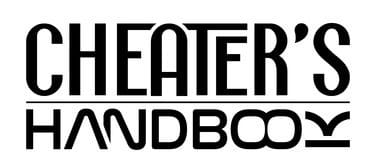The Pros and Cons of Open Relationships

In the grand lexicon of love and relationships, there’s one phrase that often raises eyebrows, piques curiosity, and prompts a lively debate: “open relationships.” So, what is this seemingly modern construct of human connection? And more importantly, why should we dive into the tumultuous sea of its pros and cons?
An open relationship, simply put, is a romantic partnership that is not constrained by the exclusivity tag. In this arrangement, partners consent to each other venturing outside their relationship for emotional or sexual connections. Now, before your mind conjures images of an unrestricted, no-holds-barred romantic buffet, let’s get one thing straight: open relationships are not about flagrant infidelity or commitment-phobia. Quite the opposite, they are deeply rooted in trust, honesty, respect, and meticulously crafted boundaries. In an open relationship, every party involved is on the same page, effectively turning the traditional concept of monogamy on its head.
The phrase “open relationship” might sound like a product of the 21st-century society that loves to challenge conventional norms. However, it’s not as newfangled as you might think. The concept of non-monogamous relationships has peppered the annals of history for centuries. From the polygamous marriages of ancient emperors to the sprawling, complicated love lives of the Greek Gods, our ancestors weren’t strangers to these relationships’ dynamics. Even in more recent history, free love movements of the ’60s and ’70s explored non-monogamy long before it was a trending hashtag.
So why the modern fascination with open relationships? Perhaps it has something to do with our insatiable desire to push boundaries, or maybe it’s the allure of the unknown, the thrill of rewriting the rules of love. Or, perhaps it’s born from the increasing recognition that love, in all its forms, is as diverse as the individuals who experience it.
As we prepare to pull back the curtain on the pros and cons of open relationships, keep in mind that, like most things in life, open relationships are not a one-size-fits-all solution. They are not for everyone, just as monogamy might not be for everyone. They have their joys and challenges, their highs and lows, their share of laughter and tears.
One thing’s for sure, though: starting an open relationship is about as simple as untangling a pair of earphones. So, fasten your metaphorical seatbelts and keep your minds open as we plunge into the labyrinth of love and connection that is open relationships. As we navigate the intricacies of this complex subject, I promise you one thing: it will be an informative, intriguing, and dare I say, entertaining journey.
The Pros of Open Relationships
Personal Growth and Self-Discovery
For starters, open relationships offer a unique platform for personal growth and self-discovery. These relationships often require individuals to confront their insecurities, examine their desires, and redefine what love and commitment mean to them. It’s a little like embarking on a soul-searching journey but with the added complexity of juggling multiple partners. Suddenly, you find yourself learning lessons in self-awareness that no amount of meditation or yoga retreats could impart.
Freedom and Autonomy
Open relationships also champion freedom and autonomy, crucial ingredients for the independent souls among us. Imagine being in a loving relationship without sacrificing the thrill of new encounters. The chance to explore connections with others can be incredibly liberating. It’s like having your cake, eating it, and then getting a second helping. It’s the romantic equivalent of choosing both Superman and Batman, no pesky choosing needed.
Increased Communication and Honesty
Now, you might think that open relationships are a gateway to a lover’s paradise, but they come with their own set of challenges (more on that later). To navigate these challenges, communication is key. Open relationships demand transparency, honesty, and constant dialogue, leading to increased communication between partners. It’s a bit like upgrading your communication skills from ‘basic small talk’ to ‘intense negotiation at a United Nations summit’.
Diverse Experiences and Interactions
Finally, one of the most colorful feathers in the cap of open relationships is the opportunity for diverse experiences and interactions. The possibility to connect with different individuals, each with their own personalities, preferences, and quirks, allows you to experience the full spectrum of human connection. It’s a bit like taking a grand world tour without leaving the comfort of your own city. You get to immerse yourself in different “cultures,” pick up a few “local phrases,” and maybe even enjoy some exotic “cuisine.”
The Cons of Open Relationships
Potential for Jealousy and Insecurity
Now, let’s flip the coin and consider the not-so-glamorous side of open relationships. Just as our favorite superheroes have their Achilles heel, open relationships too come with a set of challenges. One such issue is the potential for jealousy and insecurity. No matter how open-minded and Zen you are, seeing your partner with someone else can be as fun as getting a root canal without anesthesia. Jealousy is a natural human emotion, and managing it can be a Herculean task, requiring a level of emotional intelligence that not everyone possesses.
Difficulty in Managing Multiple Relationships
Next up on the con list is the logistical nightmare of managing multiple relationships. It’s not all romantic escapades and candle-lit dinners. It involves juggling different schedules, emotional needs, and sometimes even geographic locations. It’s a bit like being a circus performer, balancing multiple plates at once, except in this case, the plates have feelings and can text you at 2 am.
Social Stigma and Misunderstanding
A significant challenge of open relationships is dealing with social stigma and misunderstanding. Even in our progressively liberal society, open relationships are often misunderstood and judged. It’s akin to swimming upstream in a river filled with monogamous salmon. The mainstream acceptance of open relationships lags behind, and people in them often face unjust criticism and judgment.
Increased Risk of Sexual Health Issues
Lastly, there is the elephant in the room – the increased risk of sexual health issues. While this is a manageable concern with responsible behavior and regular health checks, it is a valid consideration. As they say, love may be blind, but sexually transmitted diseases certainly aren’t. So, if you’re exploring the open relationship route, you should also be prepared to explore the inside of a clinic occasionally.
Balancing the Pros and Cons
Life is a delicate act of balance, and open relationships are no different. If the pros are the tantalizing cheese in our relationship sandwich, then the cons are the sharp onions adding a bitter tang. And just as the right ingredients can offset the sharpness of an onion, clear communication, understanding, and a good dollop of self-worth can mitigate the potential downsides of open relationships. And remember to check out the best places to find people in open relationships.
Understanding Individual Circumstances
Firstly, there’s no one-size-fits-all formula for successful open relationships, and the key lies in understanding individual circumstances. Just as you wouldn’t wear a snowsuit to the beach, certain relationship structures might not suit your personal or emotional needs. Open relationships can be customized to fit the individuals involved, be it through stipulating what kind of relationships are permissible outside the primary relationship or setting rules on how much information is shared about other partners.
The Magic of Communication
Communication is like the magic potion in the realm of relationships. It’s essential to regularly discuss feelings, expectations, and boundaries to avoid misunderstandings. It’s like having a GPS in the uncharted territory of open relationships; it doesn’t necessarily make the journey easy, but it helps prevent you from getting hopelessly lost.
Recognizing and Preserving Self-Worth
Among all this talk of partners and relationships, there’s one person you should never ignore: you. Recognizing your self-worth is paramount in any relationship structure, but it’s especially crucial in open relationships. You are not a half waiting to be filled by someone else; you are a complete individual. Remember that your value does not diminish based on the number of partners you or your significant other have. Your worth is not a cake to be divided but a sun that can shine on multiple planets at once.
Clear Boundaries, Clear Conscience
Finally, establishing clear boundaries can help mitigate potential conflicts. Is overnight staying allowed with other partners? Are there off-limits days reserved for the primary relationship? Setting these boundaries might seem as thrilling as reading a user manual, but it’s vital to ensure that all parties are comfortable and feel valued.
Guiding Principles in Open Marriages
Embarking on an open marriage can sometimes feel like trying to assemble a ship while you’re already out to sea. While the principles of open relationships generally apply, open marriages come with their unique dynamics, being tied inextricably with aspects like shared responsibilities, family, and long-term commitments. Let’s anchor down some guiding principles specific to open marriages.
Maintaining the Primary Relationship: The Home Base
In the vast ocean of open marriage, your primary relationship with your spouse is your home base. Nurturing this relationship, keeping the spark alive, and ensuring shared responsibilities are met can act as your compass, guiding you through turbulent waters. It’s all about remembering why you both are the captain and the first mate of this ship in the first place.
Regular Check-ins: Navigational Tools
Regular check-ins with your spouse are crucial in an open marriage. Consider these check-ins as your navigational tools that help you chart your course and avoid potential icebergs. These conversations should delve into how you both feel about the open marriage, how your external relationships are impacting your marriage, and any adjustments that may need to be made.
Family Considerations: The Crew Members
An open marriage often involves more than just the couple – there are often family members, including children, to consider. Ensuring that the open nature of your marriage doesn’t negatively impact your family life is crucial. It’s a bit like maintaining harmony among the crew members on a ship. Privacy, discretion, and a united front as parents remain important.
Transparency and Trust: The Lifeline
Transparency and trust in an open marriage act as the lifeline that you can cling onto in times of stormy weather. Be honest about your feelings, even if they are difficult or unpleasant. Being upfront about what’s happening can avoid misunderstandings and ensure your primary relationship stays afloat.
Emotional Balance: The Ballast
Last but not least, maintaining an emotional balance is important. Just as a ship needs ballast to keep it steady, managing your emotions ensures that your open marriage doesn’t capsize under the weight of jealousy, guilt, or neglect. This might involve seeking external support like counselling or support groups.
Open Relationships vs. Cheating: A Brief Comparison
Navigating the world of relationships is a bit like embarking on an expedition in the jungle; it’s a fascinating journey, but it’s easy to get lost or confused. One such confusing area is the difference between open relationships and cheating. So, let’s shine a light on these terms and explore the difference.
Defining Cheating: When Rules Go Out the Window
Cheating, in relationship terms, is like playing a game of Monopoly where one player secretly steals from the bank. It involves breaking the established rules or boundaries set within a relationship, often leading to feelings of betrayal and heartache. If you agreed to only pass Go and collect $200 but find your partner has been hoarding houses on Park Place, you’re probably going to feel deceived.
Consent and Knowledge: The Key Distinguishing Factors
Here’s where open relationships differ significantly. They’re like a game where all the players agree to the rules beforehand. And these rules might include engaging in romantic or sexual relationships with other people. Consent and knowledge form the bedrock of an open relationship. Each partner is aware and consents to the other forming connections outside of the relationship, a stark contrast to the deceit typically associated with cheating.
Ethical Considerations: The Scales of Right and Wrong
The ethical implications of open relationships and cheating are as different as chalk and cheese, or let’s say, a piranha and a goldfish. Cheating often involves secrecy, deception, and betrayal, which are generally frowned upon in the ethical playbook of human relationships.
What motivates a person to cheat varies: from self-novelty, to lack of fulfillment in their current relationship, to simply the thrill of the forbidden. Some may cheat due to dissatisfaction or unmet needs, whether they are emotional, physical, or intellectual. Others
On the other hand, open relationships, when conducted with honesty, mutual consent, and respect for boundaries, can be ethically sound. There’s no betrayal if everyone’s playing by the agreed-upon rules. It’s like a high-stakes game of poker; as long as everyone knows the stakes and chooses to play, no one can cry foul.
The Role of Communication in Open Relationships
Let’s imagine, if you will, that an open relationship is like a symphony. The various players, with their unique roles and harmonies, create an enriching and complex performance. Now, in this symphony, communication plays the part of the conductor. It keeps everyone in sync, directs the tempo, and ensures a harmonious performance. Without it, you might end up with a discordant cacophony rather than a beautiful melody.
The Maestro of Understanding
In the symphony of an open relationship, communication is the maestro leading the orchestra. It promotes understanding, ensuring that every party knows their part in the grand scheme of things. Are you a violin, bringing sweet melodies to the relationship, or the drums, providing a sturdy beat? Only through open and honest dialogue can these roles be defined and understood.
Navigating Difficult Passages
Just like in any musical composition, there are bound to be challenging passages in open relationships that require careful navigation. Communication is the baton that helps guide through these difficult parts. It’s through expressing feelings – be it of unease, jealousy, or insecurity – that these tricky measures can be tackled and harmony can be restored.
Keeping the Rhythm
A critical function of communication in open relationships is maintaining the rhythm. Regular check-ins and open conversations help keep the relationship tempo steady and balanced. It’s like the steady beat of a metronome, providing a consistent rhythm that guides the relationship.
Preventing Missteps
Lastly, communication helps prevent missteps. Imagine the chaos if the trumpets blared out a triumphal fanfare while the rest of the orchestra was still in the gentle adagio. Similarly, in open relationships, uncommunicated actions can lead to discord and hurt feelings. By being transparent about intentions and actions, everyone stays in harmony.
Common Misunderstandings About Open Relationships
Let’s face it, misunderstandings about open relationships are as rampant as rabbits in a carrot field. It’s as though some folks look at open relationships through a pair of wonky spectacles, distorting the view into something almost unrecognizable. So, let’s take a moment to clean those spectacles and dispel some common misconceptions.
Misunderstanding #1: Open Relationships Are Easier
Some people think that open relationships are easier, like taking a stroll in the park on a sunny day. But let’s be honest, managing multiple relationships is more akin to juggling flaming torches while unicycling across a tightrope. It requires excellent communication skills, emotional maturity, and the ability to navigate complex feelings. Easy? Not so much.
Misunderstanding #2: People in Open Relationships Can’t Commit
Ah, the old “can’t commit” myth. It’s as persistent as a cat meowing at 4 a.m. for breakfast. Just because someone is in an open relationship doesn’t mean they have commitment issues. In fact, open relationships require a substantial amount of commitment to honesty, transparency, and mutual respect. The ability to maintain multiple relationships simultaneously can indicate a high level of commitment, albeit distributed differently.
Misunderstanding #3: Open Relationships Are Just About Sex
Another popular misconception is that open relationships are all about the horizontal tango. While some open relationships might have a physical component, it’s not always the main driving factor. Many people in open relationships value the emotional connection, diversity, and personal growth that these arrangements can provide.
Misunderstanding #4: Everyone in Open Relationships Is Polyamorous
Open relationships and polyamory are often lumped together like mashed potatoes and gravy. While there’s some overlap, they’re not the same. Open relationships are a type of non-monogamous relationship structure, while polyamory involves multiple romantic relationships, often with a focus on love and long-term commitment.
Misunderstanding #5: Open Relationships Are a Solution to Relationship Problems
Using open relationships as a band-aid to fix relationship problems is about as effective as using a sieve to bail out a sinking boat. Open relationships can expose and amplify existing issues, not solve them. If there’s a crack in the relationship foundation, adding more weight (i.e., more partners) is likely to make it worse, not better.
In Conclusion: An Open Dialogue about Open Relationships
Well folks, we’ve arrived at the end of our tantalizing journey through the land of open relationships. Our compass has guided us through the pros and cons, the nitty-gritty details, and common misconceptions, all in a valiant attempt to set the record straight.
Why, you might ask, did we embark on this voyage? Why did we delve so deeply into the topic of open relationships? Well, in a world where monogamy is often served as the main course (sometimes even the appetizer, main, and dessert), it felt necessary to shine a spotlight on an alternative way of loving and living. After all, variety is the spice of life, and what’s a meal without a little spice?
We’ve written this article because we believe in empowering people with information. In the grand casino of life, it’s better to play the game of relationships with all the cards laid on the table, even the pros and cons of open relationships. Understanding brings acceptance, and acceptance makes room for everyone at the big ol’ table of love.
This article matters because, in the end, it’s not just about open relationships; it’s about empathy, understanding, and respect for all types of relationships. It’s about realizing that love isn’t one-size-fits-all but a beautiful patchwork quilt of many shapes, sizes, and patterns.
So, here we are, naturally concluding our journey just as we would at the end of a thrilling roller coaster ride. No, we didn’t solve the meaning of life, but we hope we’ve given you some insight, a few laughs, and plenty to ponder about the fascinating world of open relationships.
But remember, the conversation doesn’t end here! Like a persistent door-to-door salesman, the topic of open relationships will keep knocking. So, keep the dialogue open, keep questioning, keep learning, and most importantly, keep laughing!
Frequently Asked Questions
Are open relationships common?
Open relationships, while not the norm, are certainly more common than you might think. It’s like finding a four-leaf clover in a field; not every clover has four leaves, but they’re definitely out there!
Can open relationships really work?
Absolutely! Like a well-oiled machine, open relationships can work smoothly given the right components: communication, honesty, and mutual respect.
How do you navigate jealousy in an open relationship?
Navigating jealousy in an open relationship is a bit like crossing a rickety bridge; it requires patience, caution, and good communication. Openly discussing feelings of jealousy and creating strategies to manage it can go a long way.
What are the rules in an open relationship?
The rules in an open relationship are as unique as the people in it. They’re a bit like the rulebook of a new board game; they’re set by the players, and everyone involved agrees to follow them.
Can open relationships lead to more satisfaction?
Some people find that open relationships can lead to more satisfaction due to increased autonomy, diverse experiences, and personal growth. But remember, what’s one person’s cherry on top might be another’s sour lemon.
Can an open relationship save a failing relationship?
Open relationships aren’t magical elixirs to mend a broken relationship. If there are issues, it’s generally better to address them directly rather than opening the relationship, which can often add complexity.
Are open relationships and polyamory the same thing?
While they share some similarities, open relationships and polyamory are not the same. Open relationships involve consensual non-monogamy with a focus on freedom and autonomy, whereas polyamory refers to the desire and capacity to maintain multiple romantic relationships simultaneously. Think of them as cousins in the vast family of non-monogamous relationships.
My Go-To Platform for Flings, Affairs, and MILFs
Looking for top-notch flings, affairs, or MILFs? Skip the rest, Ashley Madison is the gold standard. Zero bots, zero fakes—just real connections. I've scored big in multiple cities. Sign up now, it's FREE!













